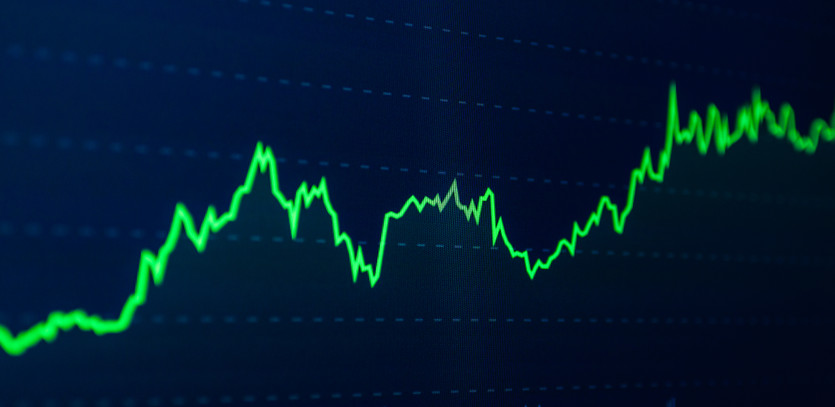Whipsaw in the trading world signifies the swift reversal of a stock, market, or trading indicator after hinting at a different course. This sudden shift in direction can often cause traders to incur losses if they make ill-timed decisions to enter or exit their holdings.
The whipsaw effect can be split into two distinctive patterns. The first pattern is characterized by an initial upward movement in the price of a stock, swiftly followed by a severe downward spiral that drops the share price below its original standing. The second pattern, conversely, involves an initial drop in the share price that is abruptly followed by a rapid upward swing, taking the stock to a higher position than where it started.
Key Highlights of Whipsaw Movements
Understanding the key highlights of whipsaw movements is crucial for traders navigating volatile markets. Here are some important points to consider:
-
Unpredictable Reversals: Whipsaw movements are characterized by sudden and unexpected reversals in the direction of a stock, market, or trading indicator. These reversals can catch traders off guard and lead to trading losses if they enter or exit positions at the wrong time.
-
No Set Rules: Unlike predictable trends or patterns, whipsaw movements do not adhere to any set rules or guidelines. They can occur without warning, making it challenging to anticipate and manage them effectively.
-
Impacts Trading Strategies: Whipsaw movements can significantly impact various trading strategies. Trend followers may be whipsawed out of their positions if they buy or sell during an overheated market. Swing traders can be affected when they enter a position just before a whipsaw occurs. Scalpers, on the other hand, capitalize on whipsaw movements to make quick gains. Long-term buy and hold investors typically weather whipsaw movements, as their focus is on the overall performance of the stock over an extended period.
-
Risk of Losses: Whipsaw movements often lead to trading losses, as they can swiftly reverse gains or trigger stop-loss orders. Traders must exercise caution and employ risk management strategies to mitigate potential losses.
Breaking Down Whipsaw in Investing
A whipsaw event in the investment domain occurs when an asset's price or an indicator suddenly moves in the opposite direction from its previous course. This phenomenon can transpire in both ascending and descending markets.
The term "whipsaw" finds its origin in the back-and-forth motion of lumberjacks using a saw of the same name. A trader is considered "whipsawed" when the asset they've invested in abruptly swings in an unforeseen direction.
Volatile markets, with their unpredictable price fluctuations, are prime environments for whipsaw patterns. Day traders and other short-term investors frequently experience this phenomenon. However, those who adopt a long-term, buy and hold approach can often withstand market volatility and secure positive returns.
For instance, an investor expecting a stock price to increase over time may buy shares at the peak of a market rally. However, following the release of a less than stellar quarterly report, the stock value might drop over 10%, and the investor is left holding shares at a loss. This situation effectively illustrates the whipsaw effect.
There are two major categories of whipsaws – upmarket and downmarket. The former arises when a rising market or asset suddenly dips before returning to an upward trajectory. The latter, on the other hand, occurs when a declining asset suddenly rises for a brief period before continuing its downward movement.
An asset is said to whipsaw when it sharply changes direction twice. While typically seen when the asset moves against the prevailing trend, this term can also be applied to assets without an established trend.
Whipsaw in Action: Case of Coinbase (COIN)
An instance of whipsaw trading can be observed in the stock of Coinbase (COIN). On its inaugural trading day on April 14, 2021, the stock opened at $381, climbed past $429.54, and then plummeted, closing at $328.28. This dramatic rise and fall perfectly demonstrate the whipsaw moves.
Traders can be whipsawed if they buy right before a price drop or sell just before a price hike, potentially leading to losses.
Mechanism of Whipsaw in Investing
Understanding the underlying mechanism of whipsaw movements is essential for traders to navigate the complexities of the market. Here's a closer look at how whipsaw occurs in investing:
-
Overbought and Oversold Conditions: Whipsaw movements often happen when a stock becomes either overbought or oversold. Overbought stocks experience excessive buying demand and are traded above their fair value, while oversold stocks face heightened selling pressure and are traded below their fair value.
-
Loss of Momentum: When stocks move too far away from their fair value due to buying or selling pressure, they can lose momentum. This loss of momentum makes the stocks vulnerable to whipsaw movements, as there may not be enough traders to sustain the buying or selling demand.
-
Technical Indicators: Traders utilize various technical indicators, such as the Relative Strength Index (RSI), to identify overbought and oversold conditions. RSI measures the speed and change of price movements and provides insights into whether a stock is overbought or oversold. Traders can use these indicators to gauge the likelihood of whipsaw movements and adjust their strategies accordingly.
-
Price Fluctuations and Sentiment: Whipsaw movements can also be influenced by price fluctuations and changes in market sentiment. Unexpected news, earnings reports, or economic events can trigger sharp reversals in stock prices, leading to whipsaw movements.
By understanding the mechanism behind whipsaw movements, traders can make more informed decisions and implement risk management strategies to navigate the challenges posed by these unpredictable market dynamics.
Identifying Overbought and Oversold Stocks
One tool to identify overbought or oversold stocks is the Relative Strength Index (RSI) technical indicator. The RSI metric quantifies the rate at which the stock moves in comparison to its past performance. With RSI, anything below 30 indicates an oversold state, and anything above 70 signifies an overbought condition.
Whipsaw Impact on Individual Investors
Unexpected price fluctuations, particularly sudden reversals, can unsettle investors and impact their portfolios. Here's how the whipsaw effect can influence various popular trading strategies:
-
Trend Following: Trend followers could be whipsawed out of their position if they buy an overheated stock. They often use technical indicators like RSI to determine buying or selling times.
-
Swing Trading: Swing traders ride momentum over several weeks, using momentum indicators. Whipsaw movements can catch them off guard if they enter a position at an inopportune time.
-
Scalp Trading: Scalpers, who target many small gains, often thrive on whipsaw movements. They usually jump into the stock after a sharp drop to capture the subsequent upward move.
-
Long-Term Buy and Hold: As long-term investors overlook short-term fluctuations, the whipsaw effect should ideally not affect them.





